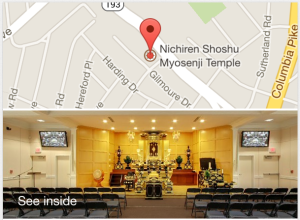 There is a word in Japanese, “inga”, which means cause and effect. The principle underlying “inga” is that if there is a cause, there will certainly be an effect, and that if there is an effect, there will, without fail, also be a cause.
There is a word in Japanese, “inga”, which means cause and effect. The principle underlying “inga” is that if there is a cause, there will certainly be an effect, and that if there is an effect, there will, without fail, also be a cause.
It would be no exaggeration to say that this principle of cause and effect is at the foundation of all religions, philosophies, ideologies and sciences, whether they be old or new, eastern or western. But it could be argued that in schools of thought other than Buddhism, the concept of cause and effect pertains only to the limited period of this present life, and only to the material world. For that reason, schools of thought other than Buddhism are incomplete.
If you want to understand the causes that existed in the past, look at the results as they are manifested in the present. And if you want to understand what results will be manifested in the future, look at the causes that exist in the present. (written by Nichiren Daishonin in 13th century Japan)
Visit Myosenji Temple
Saturday, September 12th:
What is Buddhism? Who is Buddha?
Lecture by Chief Priest, Rev Murata
Sunday, September 13th:
What is Karma?
Lecture by Chief Priest, Rev Murata
- Learn how to chant Nam Myoho Renge Kyo and properly use the Juzu Beads, Buddhist prayer beads.
- Q&A with our Chief Priest.
- Meetings start at 2:00 pm and conclude around 3:15 pm. Open to the public.
If you have decided to become a Buddhist or are interested in learning how to become a Buddhist, after Sunday’s meeting (about 3:30 pm) Rev Murata will be performing the Acceptance of the Precept Ceremony, the ceremony where you become a Buddhist.
Excerpted: Cause and Effect.


